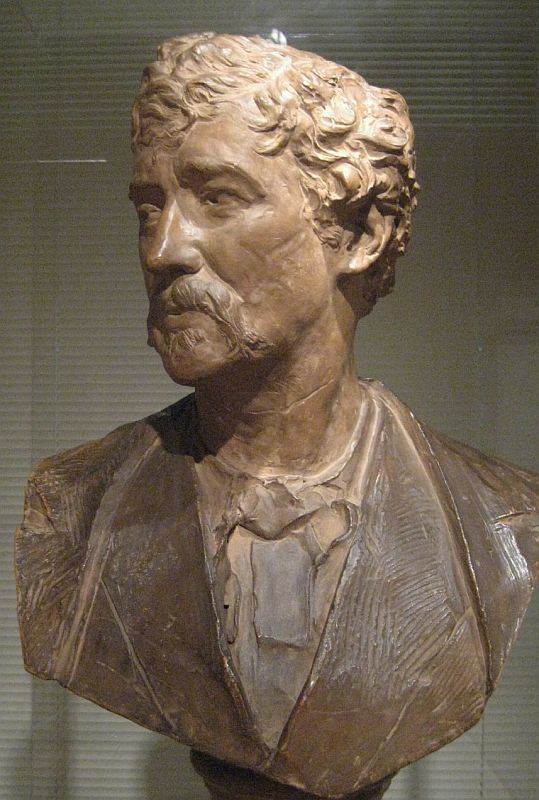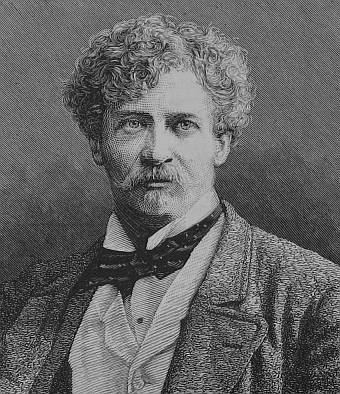Known for Sculpture Name Joseph Boehm | Role Sculptor | |
 | ||
Full Name Josef Erasmus Bohm Born 1834 Vienna Died December 12, 1890, London, United Kingdom People also search for Charles Darwin, Queen Victoria, Robert William Edis | ||
Sir Joseph Edgar Boehm, 1st Baronet, RA (Vienna, 6 July 1834 – 12 December 1890 London, England) was a medallist and sculptor, best known for the Jubilee head of Queen Victoria on coinage, and the statue of the Duke of Wellington at Hyde Park Corner. His oeuvre is substantial and he exhibited 123 works at the Royal Academy, from 1862 to his death in 1890.
Contents

Family

He married Louisa Frances Boteler. His daughter, Florence Louise Boehm, married Lt.-Col. Randolph Albert Fitzhardinge Kingscote (b. 6 February 1867, d. 8 December 1940) on 16 July 1890.
Career
Boehm (originally "Böhm") was born in Vienna of Hungarian parentage. His father, Joseph Daniel Böhm, was director of the imperial mint in Vienna. After studying the plastic art in Italy and at Paris, he worked for a few years as a medallist in Vienna. In 1856, he was presented with the Austrian Imperial Prize for Sculpture, the start of his distinguished career.
After a further period of study in England, he was so successful as an exhibitor at the 1862 International Exhibition that he decided to devote more time to portrait busts and statuettes, chiefly equestrian. He moved to England in 1862, and became a British subject three years later. A colossal statue of Queen Victoria, executed in marble (1869) for Windsor Castle, and the monument of the Duke of Kent in St George's chapel, were his earliest great works, and so entirely to the taste of his royal patrons that he rose rapidly in favour with the court. In 1874 he completed a substantial statue of John Bunyan (1628–1688) which was unveiled on 10 June at St Peter's Green, Bedford, by Lady Augusta Stanley, before a crowd of 10,000. He became an Associate of the Royal Academy in 1878, was appointed sculptor in ordinary in 1881 and was elected to the Royal Academy in 1882. In 1889 he was created a baronet, of Wetherby Gardens in the Parish of St Mary Abbots, Kensington, in the County of London.
In 1887, he designed and executed the model for the dies for a series of coins, commemorating the 50th anniversary of the queen's reign. The coins are signed J.E.B. below the shoulder. This design was severely criticised by his peers as well as the public. It was replaced in 1893. The coins depicted the royal arms in the order of the garter on the reverse. As a result, the sixpences were frequently gilded and passed off as gold half sovereigns. Therefore, the sixpence reverted to its standard design.
Boehm is responsible for a large free-standing statue of Queen Victoria in Queen's Square, Sydney.
A speciality of Boehm's was the portrait bust; there are many examples of these in the National Portrait Gallery. He was often commissioned by the Royal Family and members of the aristocracy to make sculptures for their parks and gardens. His most important works include St George and the Dragon, which can be found outside the State Library of Victoria, and Francis Drake. His large sculpture of the stallion King Tom (1874) was commissioned by Baron Mayer Amschel de Rothschild for his new mansion, Mentmore Towers, and moved to Dalmeny House in 1982.
There are many statues by Boehm in London. For the memorial to General Charles George Gordon in St Paul's Cathedral, he carved an effigy of Gordon recumbent on a sarcophagus. His equestrian statue of the Duke of Wellington at Hyde Park Corner, unveiled in 1888 was commissioned to compensate for the removal of the colossal sculpture of the Duke by Matthew Cotes Wyatt from the nearby Wellington Arch to Aldershot. On the death of Dean Stanley, Boehm was commissioned to execute his sarcophagus in Westminster Abbey. Among his ideal subjects, the "Herdsman and Bull" is notable.
Princess Louise
Boehm's most famous pupil was the Princess Louise, Duchess of Argyll, daughter of Queen Victoria. She was at his house, at 76 Fulham Road in London, when Boehm died suddenly on 12 December 1890, provoking unsubstantiated press speculation about a sexual relationship between the two.
